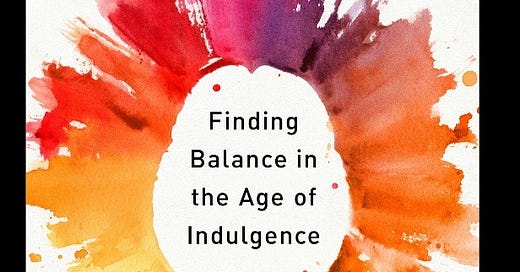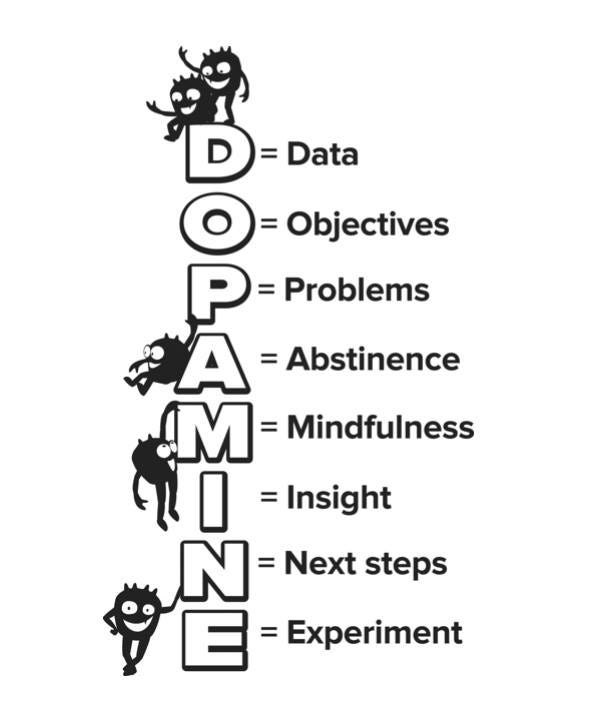Book Review: "Dopamine Nation: Finding Balance in the Age of Indulgence"
Author: Dr Anna Lembke M.D.
Although this is a book about addiction, my main interest in reading it was as a person with Parkinson's Disease, and hence someone who experiences severe dopamine dysregulation, for the insights which it might bring to managing such conditions. Indeed, I found the book highly relevant to the lives of folks with chronic illnesses, especially on the topic of dopamine, where the book does bring forth new and vital information.
According to the author, like many of the other regulatory systems of our biology, dopamine regulation is inherently a opponent process of antagonistic checks and balances, which seek to keep the baseline levels of dopamine in the body and brain at an equilibrium.
For dopamine, this balancing system is pleasure and distraction on one side, and pain and discomfort on the other. So there is always an inevitable cost to pleasure of some level of subsequent discomfort.
For simple pleasures, the discomfort may just be craving for more of what created the pleasurable feelings. The more extreme the pleasure, the more intense and prolonged the pain, as the metaphorical pendulum swings back the other way, whether hangovers after a big night out, or post-orgasmic dopamine crashes experienced by some men.
By the same token, enduring simple discomforts can lead to feelings of elation afterward, as the system re-balances by first swinging back to the pleasure side, such as feeling good after a cold shower, or runners' high.
Anna Lembke's main thesis is that we, as a society, have become too driven by pain-avoidance-at-all-costs, that we have totally lost the ability to intuit what our uncomfortable sensations are trying to tell us, are taught to ignore our own bodies' stop signals, have lost our capacity to sit with pain at all, and are told to reach out for pharmaceuticals at the very first hint of any discomfort.
In such a culture, where a wide variety of sources of "junk" dopamine stimulation is also always available everywhere, one very tempting way to try to get rid of pain is by tipping the dopamine regulation system the other way, and to use pleasure and distraction to numb the pain. While this may work at first, because the cost of pleasure is always more pain, this is the one-way road to addictive escalation.
The main "take home" message from the book for all of us is that by trying to avoid pain and discomfort through distraction and pleasure, we are just creating even more pain for ourselves.
Indeed, the more we drive our system to extremes of dopamine release, not only the more discomfort we will feel in the aftermath, but also the more we will drive down our baseline of dopamine, permanently tipping the balance ever towards the pain side, requiring ever more extreme forms of pleasure to feel anything at all.
Physiologically, this occurs through downregulation or internalization of dopamine cell receptors, so that the cells become more insensitive to dopamine. Dopamine cell receptors appear on the surface of cells, but can be temporarily withdrawn into the body of the cell, where they are sequestered, and hence are then not available for interaction with dopamine molecules. It is this temporary sequestration of cell receptors after a burst of dopamine which causes the subsequent discomfort.
Eventually, the baseline levels of dopamine, or the background number of available dopamine cell receptors, becomes permanently so low, that we become anhedonistic - unable to feel any comfort, pleasure or joy in everyday things.
Thus the author's more holistic model of addiction, supersedes, yet includes other "single source" hypothesis, such as Dr Gabor Mate's model that is always to do with childhood trauma, via a threshold framework. In such a model, levels of unattended physical, psychic and emotional pain build up through various insults - viruses, pathogens, environmental toxins, food intolerances, developmental and shock trauma, injuries and surgeries, socio-economic disadvantages, social injustices, [... name your personal poisons...].
Once the total amount of pain and discomfort builds up beyond a critical level, we start to seek out dopaminergic sources to relieve and distract from our suffering, setting us on the path to hell. Everyone will have different thresholds, and have different and individual collections of insults, but with the same outcome. This brings addiction in to alignment with similar threshold frameworks for chronic illnesses, such as the Cell Danger Response.
The book contains a recipe for addressing addictions, via the author's D.O.P.A.M.I.N.E. model (see the image from the book below), but basically the moral of the story is that, as a society, we need to learn to listen to our internal sensations, to be able to sit with our discomforts, and to address pain signals as they arise, not just ignore them and let them build up to overwhelming levels in the first place. We need to keep our baseline or equilibrium levels of dopamine in a healthy range, where we can still enjoy the small pleasures of every day life.
The story is told through real world case studies and tales from the author's many clients as an addiction therapist, including what did and did not work for them, as well her personal experiences with addiction. She jumps straight in feet first with a shocking tale of a client with a very extreme form of sex addiction. The book is an easy and enjoyable read, without technical jargon. The final chapter seemed a bit rushed, and the book seemed to end quite suddenly.
I am teaching all that I’ve learned about chronic illnesses and trauma, along the way of my own journey, via my online course, which contains all my pragmatic knowledge and tools for reducing symptoms, suitable for: people with chronic conditions, caregivers, and therapists.





Thank you for all you do, Gary.
Thank for this summary Gary, I now want to read this book. The take away alone will help me help certain clients.